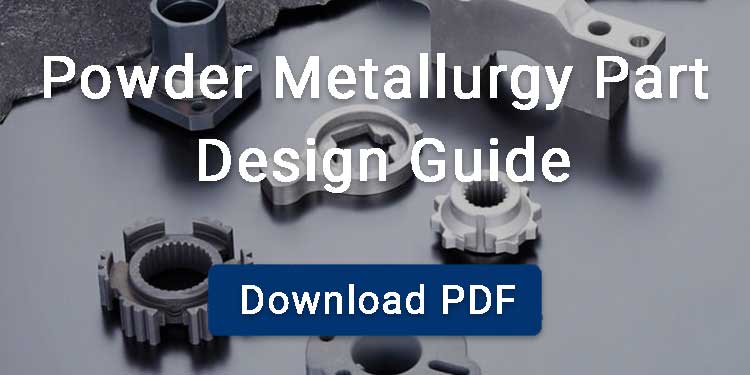Highly efficient and cost-effective, powder metallurgy has become a preferred method for producing key components in engine timing systems. With minimal material loss and excellent dimensional control, it delivers consistent results at high production volumes. What sets this process apart is its ability to form near-net-shape parts—sprockets, pulleys, and rotors—without the need for extensive machining. In this article, we’ll take a closer look at what powder metallurgy parts are, how they function within engine timing, and the benefits and limitations they present.
Contents
What are Powder Metallurgy Parts?
Instead of melting the metal, powder metallurgy process forms parts by pressing fine metal powders into shape and sintering them below their melting point. In this controlled atmosphere, particles bond through diffusion, creating a strong and precise structure. Not only does this process reduce waste, but it also minimizes secondary machining while delivering reliable dimensional accuracy. That’s why powder metallurgy parts are widely adopted in high-volume applications requiring precision and efficiency.
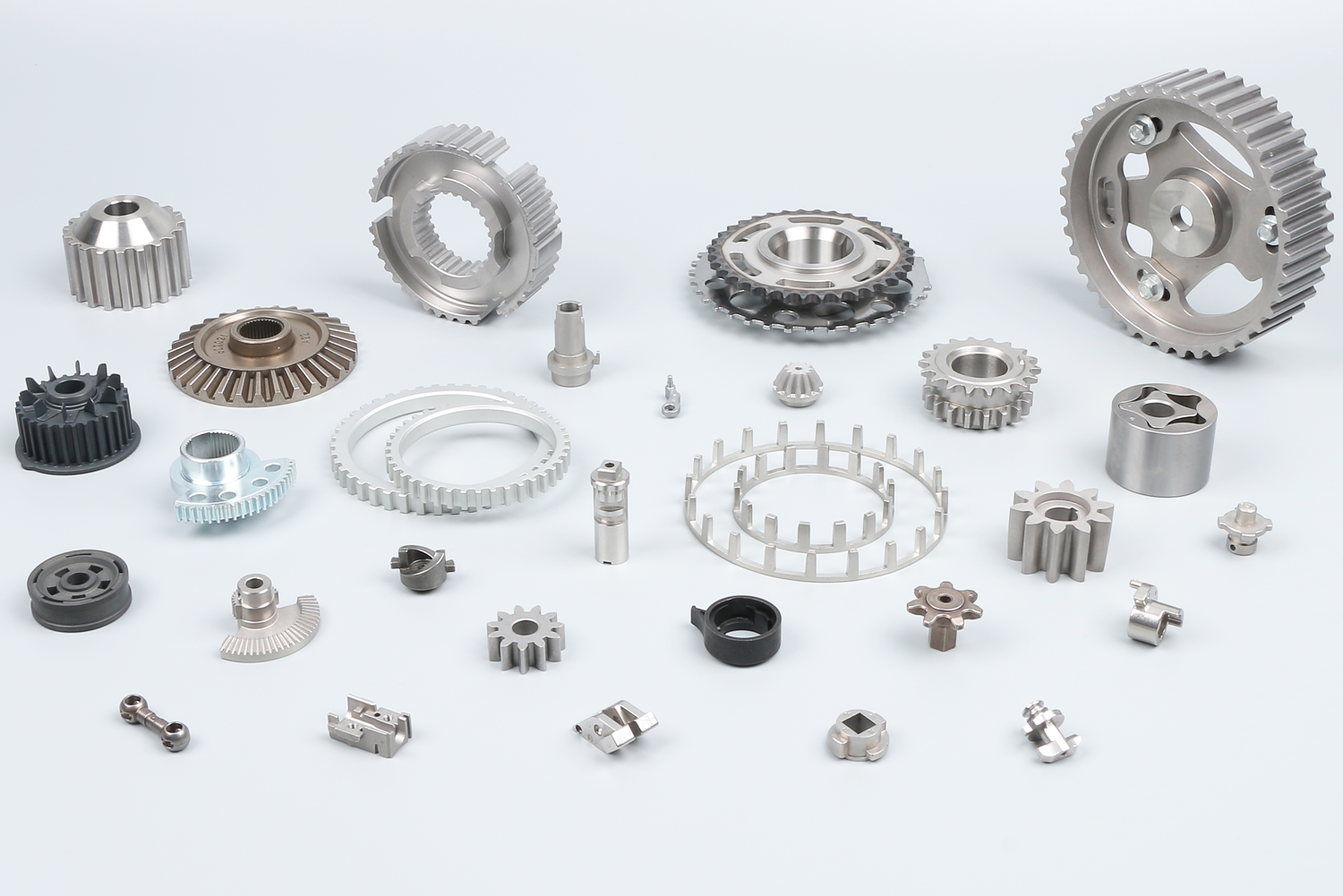
What Is Engine Timing?
The efficient combustion and mechanical performance of an engine are ensured by the precise synchronization of its internal components, known as engine timing. This engine timing is responsible for determining the opening and closing of the intake and exhaust valves relative to piston position during the combustion cycle.
Proper engine timing is essential for achieving optimal power output, improved fuel efficiency, and effective emission control. Many of these engine components, such as variable valve timing components are manufactured using powder metallurgy due to its ability to produce complex and high-strength parts.
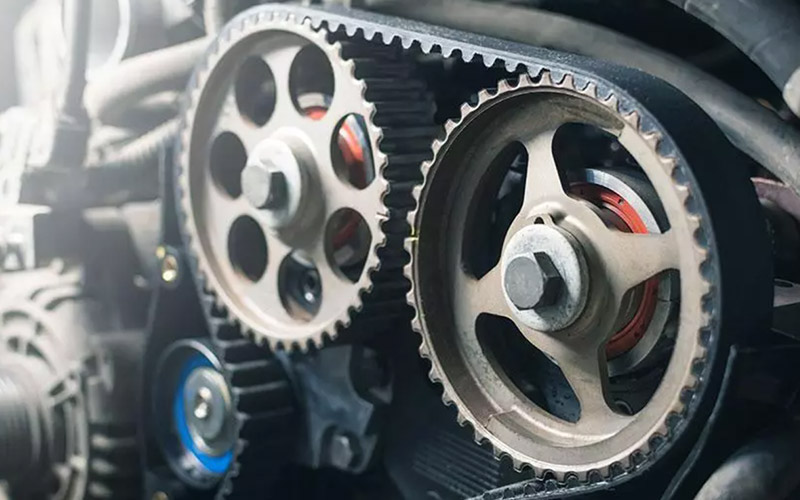
Powder Metallurgy Parts in Engine Timing
Variable Valve Timing Components
Variable valve timing in your engine is responsible for adjusting valve operation. The proper valve operation is essential for enhanced performance, fuel efficiency, and emissions control in modern engines. There are two variable valve timing components that are manufactured with the help of powder metallurgy:
In order to improve engine performance, fuel efficiency, and emissions control, modern engines rely on precise control of valve operation. This is made possible by a system known as variable valve timing (VVT), which adjusts the timing of valve opening and closing based on engine speed and load. Among the many components in this system, two important parts are commonly produced using powder metallurgy:
VVT Sprocket
VVT sprocket is mounted on the camshaft and works in coordination with the timing chain. It adjusts the camshaft’s rotational position relative to the crankshaft to optimize valve timing based on engine load and speed. The VVT sprockets produced through powder metallurgy have built-in oil passages and locking systems, which are essential for precise movement and control.
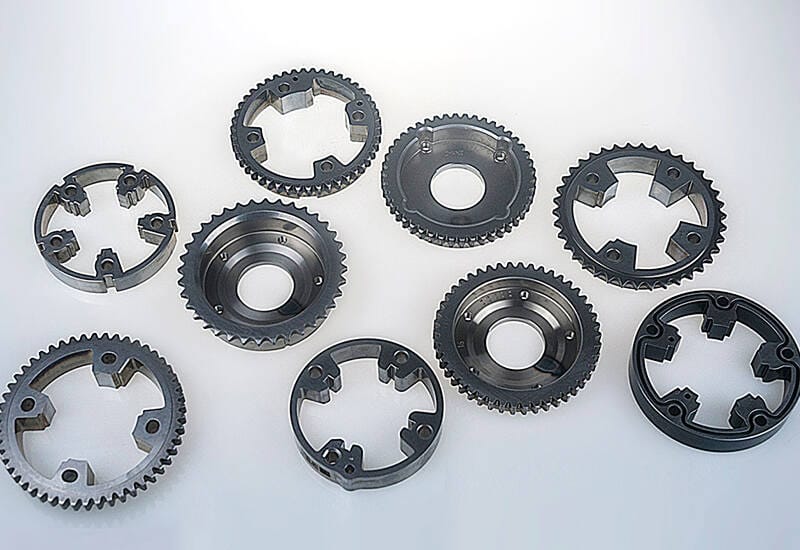
VVT Rotor
The VVT rotor is located inside the VVT sprocket housing. This rotor contains internal vanes, channels, and bore holes. It is controlled hydraulically by engine oil, shifting the camshaft phase to optimize valve timing across different RPM ranges. Powder metallurgy manufacturing allows the rotor to maintain exceptional dimensional accuracy and consistency.
Timing Sprocket
Timing sprockets are also manufactured with the help of powder metallurgy for high precision. The timing sprockets work in conjunction with a timing chain to synchronize the crankshaft and camshaft. This synchronization is considered important for smooth engine operation, efficient fuel combustion, and reduced emissions.
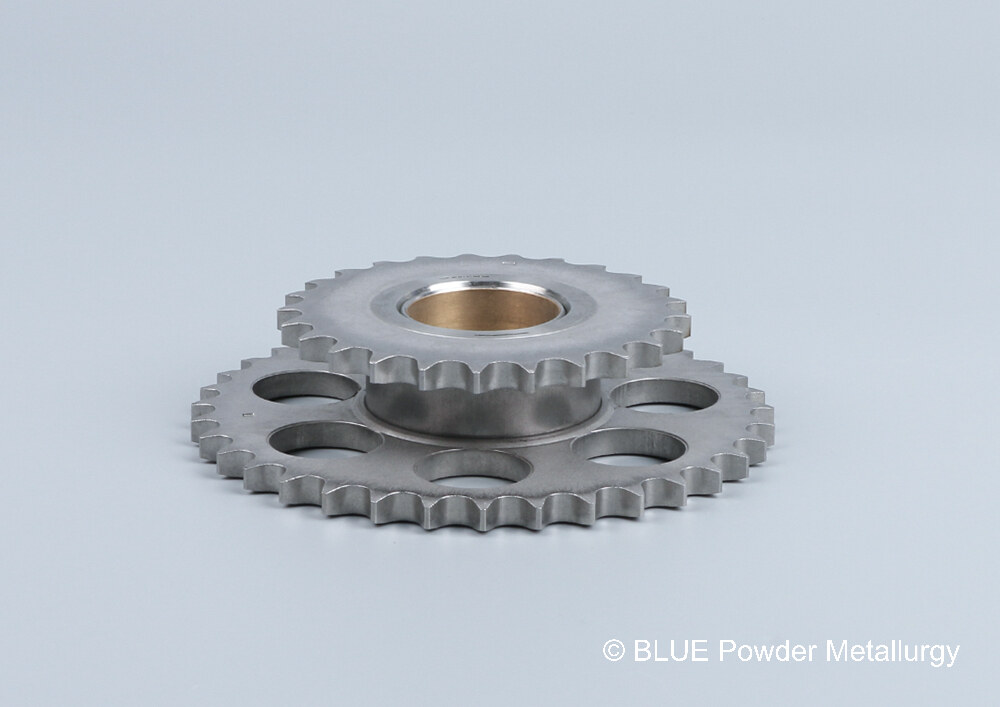
Working of Timing Sprocket
Timing sprockets are mounted on both the crankshaft and camshaft and are connected by a timing chain. When the crankshaft rotates, the sprocket on the crankshaft drives the chain, as a result the camshaft sprocket rotates. This synchronized motion ensures that the valves open and close at the correct intervals for proper engine timing.
These sprockets are of two types:
Camshaft sprocket
The camshaft sprocket is connected to the camshaft and is responsible for synchronizing its motion with the crankshaft. A camshaft sprocket usually has a larger diameter to accommodate slower rotation and to provide better control over valve actuation. It maintains valve timing precision, ensuring optimal air-fuel intake and exhaust expulsion in every engine cycle.
Crankshaft sprocket
The crankshaft sprocket is responsible for connecting the crankshaft and driving the timing chain or belt. These sprockets transfer the rotational motion generated by the pistons to the rest of the valve train.
Although it is smaller in size, it faces a greater load than the camshaft, which is why it wears out over time, potentially leading to timing misalignment. Due to this, modern engines increasingly utilize powder metallurgy (PM) to manufacture crankshaft sprockets.
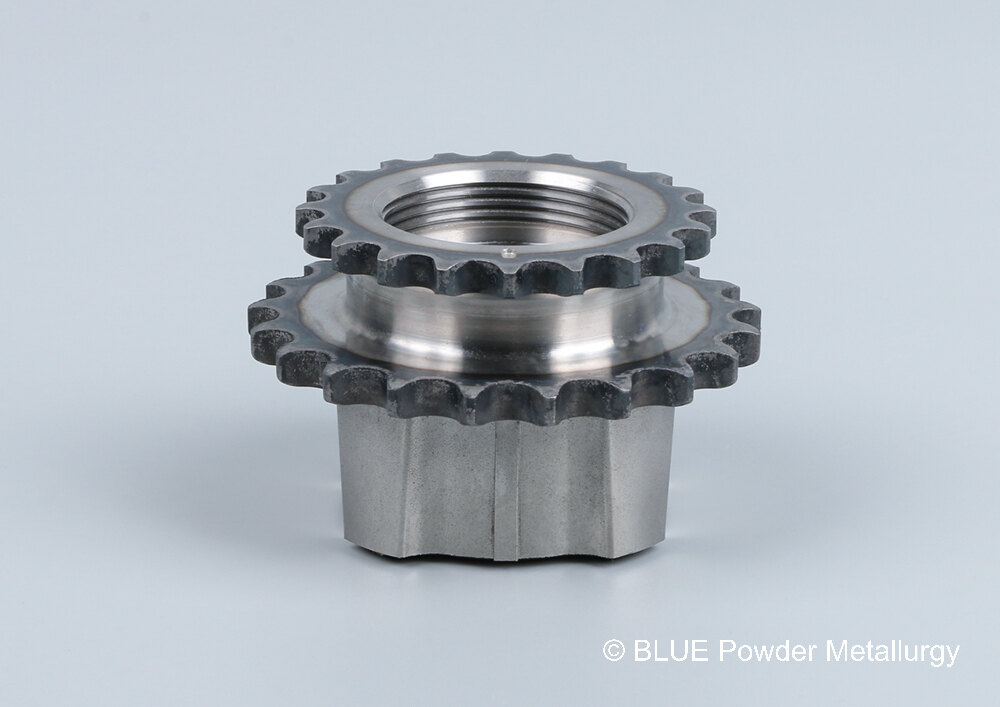
Timing Pulley
The timing pulley is generally responsible for transferring rotational motion between the shafts by working in combination with a timing belt. In automotive engines, the pulley is mounted on the crankshaft and camshaft to maintain the valve operation during combustion.
These pulleys eliminate the slippage and maintain the accurate phase relationship between the components. The design flexibility to incorporate internal features and lightweight geometries of these pulleys is achieved through Powder Metallurgy.
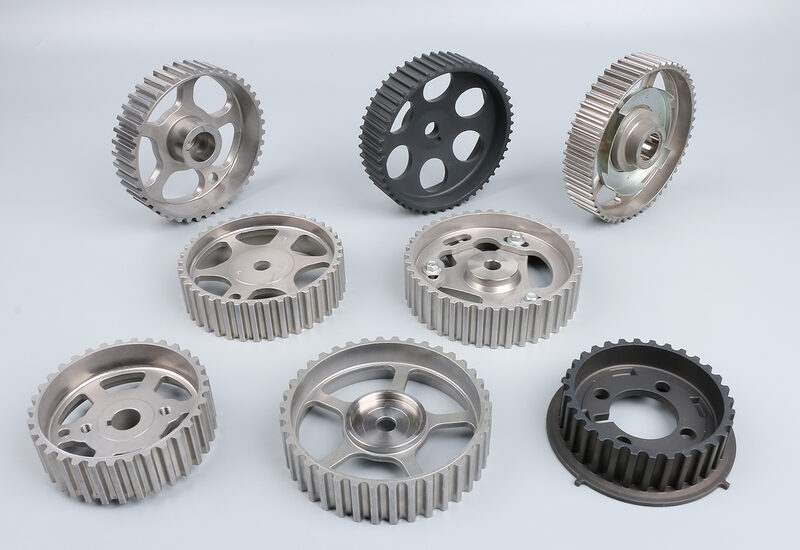
Belt Tensioner Pulley
The belt tensioner pulley ensures that the belts stay properly tensioned, such as serpentine or timing belts. This enables smooth and efficient power transmission to critical engine components, such as the alternator, water pump, and air conditioning compressor.
Powder Metallurgy Pros and Cons for Engine Timing
You can rely on powder metallurgy for low-cost, precise timing parts, but watch for limits in strength and finish.
Pros
Cost-Effective Mass Production
Powder metallurgy is considered ideal for large-scale manufacturing of engine timing parts, as it utilizes less energy than casting and machining. Not only this, but it can also produce 30 parts per minute due to its high-speed press. This results in an efficient, cost-effective technique for manufacturing the required components.
Tight Dimensional Tolerances
Using powder metallurgy enables the manufacture of components with excellent precision. The tolerances of sintered parts typically fall within ISO IT8–IT9 standards, and post-sintering sizing operations can further improve tolerances to ISO IT6–IT7. This is considered ideal for timing gears, sprockets, and pulleys.
Complex Geometry
Powder metallurgy allows for the direct formation of intricate part geometries that are difficult to achieve with traditional manufacturing methods such as casting.
Cons
Lower Mechanical Properties
PM parts are not fully dense, which can lead to lower strength and toughness compared to forged or cast parts.
Surface Finish Limitations
Sintered surfaces typically have a roughness of Ra 0.8–1.6 µm, which may not be suitable for all applications. Secondary operations such as sizing, grinding, or coating may be necessary to meet surface finish requirements.
Shape Restrictions
While complex geometries are possible, very long or highly 3D-contoured parts are not ideal for conventional PM. Isostatic pressing or metal additive manufacturing is better suited for such applications.
BLUE is an ISO 9001:2015 certified powder metallurgy company that supplies a full range of standard PM parts, including timing components with no tooling fees. You can visit our SHOP to browse and place your order. If you don’t find the part you need, we also provide custom powder metallurgy parts.



